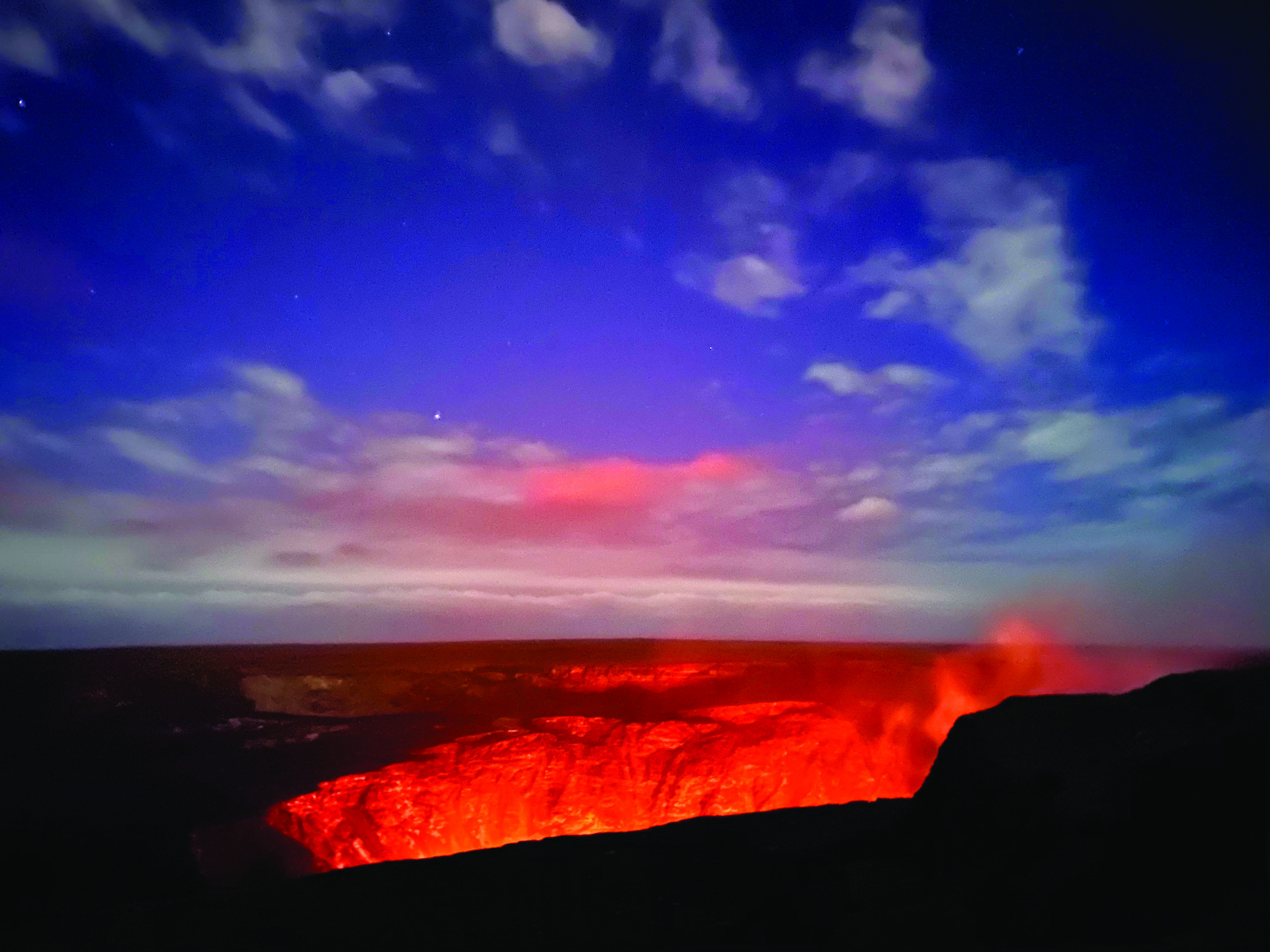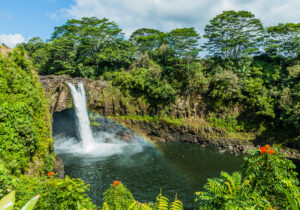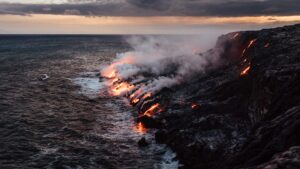Hawaiʻian Volcano Observatory on gravity as it pertains to volcanos. Travel in luxury in our Mercedes Van on one of our volcano tours and view the powerful volcano in comfort.
Most of us think of gravity as a constant. Students of physics know that gravitational acceleration is 9.8 m per second-squared (32 ft/s/s), while the rest of us are simply confident in gravity as a force that holds us to the ground and is uniform everywhere.
It turns out that gravity isn’t quite as constant as we might think.
We all know that gravity decreases the farther one gets from Earth. For example, the gravity on the top of Mount Everest is slightly lower than the gravity at sea level, because the mountain is farther from the center of Earth. In fact, a 150-pound person would weigh only 149.58 pounds at the top of Mount Everest. Consider that as an alternative to dieting the next time you are looking to lose a little weight!
Gravity also varies according to local geology. An area with a lot of mass buried beneath the surface will have slightly stronger gravity than if there is less mass beneath your feet. For example, if a deposit of copper is present beneath the ground, gravity will be slightly stronger (by about 0.000001 times) than if no copper deposit is present.
Although this seems like an incredibly small amount, a specialized gravity-monitoring instrument, called a gravimeter, can measure such minute variations in the strength of Earth’s gravitational field. Measurement locations with strong gravity are probably underlain by a large amount of mass, while weaker gravity means less mass. Gravimeters have been used for decades in mapping buried ore and petroleum deposits, because they detect subtle differences in gravity that might indicate, for instance, an iron or oil deposit beneath the ground.
The same principle can also be applied to volcano monitoring. In fact, gravity has been measured in Hawai‘i for over 50 years.
Surveys of over 3,300 sites across the Island of Hawai‘i have defined the gravity field associated with Kīlauea, Mauna Loa, Mauna Kea, Hualālai, and Kohala volcanoes. The summits and rift zones of all the volcanoes are underlain by large masses compared to other parts of the island. These massive areas probably reflect solidified magma that cooled in summit magma chambers and rift zone conduits.
Repeating the gravity measurements over time at the same locations enables scientists to track changes in gravity that might be related to volcanic activity. At a volcano, gravity increases as magma accumulates beneath the subsurface and decrease when magma drains away. Magma accumulation is usually also accompanied by inflation of the surface, so the combination of gravity and deformation monitoring provides a strong indication of whether or not an eruption is becoming more likely.
Measurements at Kīlauea since 1975, however, indicate that gravity is increasing with no inflation of the surface. This implies that mass is accumulating beneath the surface without pushing the surface upwards. Scientists at the Hawaiʻian Volcano Observatory (HVO) concluded that magma must have therefore been accumulating in a void space, like open cracks, that exist about 1.6 km (1 mi) beneath the surface.
Kīlauea is one of only a few active volcanoes in the world with a network of continuous gravity stations. In the last two years, HVO has been collecting continuous gravity data from a few sites around the volcano. Using those data, it is possible to observe subtle, small-scale changes (as small as 0.000000001 times the standard value) in gravity related to, for example, variations in lava level within Kīlauea’s summit eruptive vent.
Although less well-known than seismic, gas, deformation, and geologic monitoring, gravity is nonetheless an important method for mapping the subsurface and tracking changes at Hawaiʻian volcanoes. Now you know that the “gravity of the situation” is never constant!





